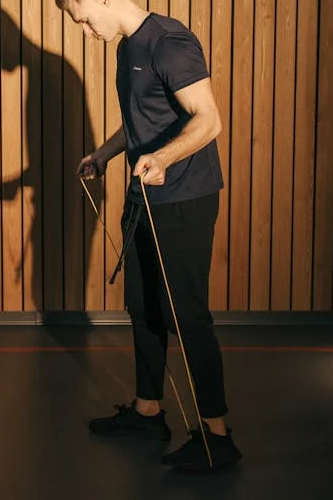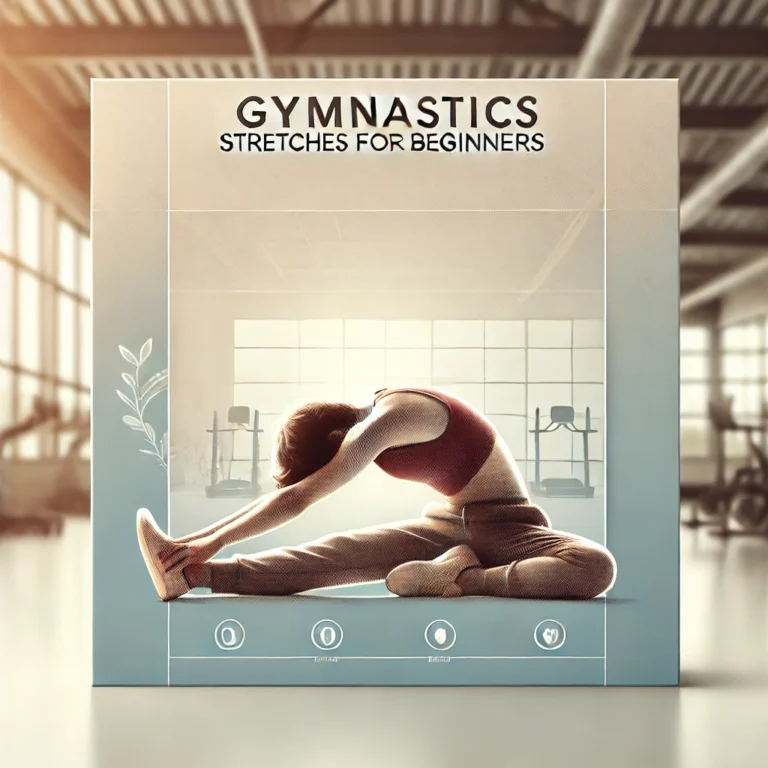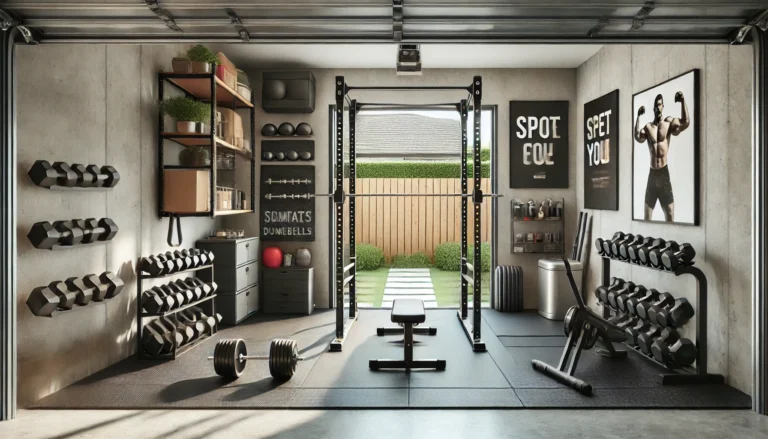Skipping rope, also known as jump rope, is a simple yet powerful fitness tool that offers a wide range of benefits. Whether you’re looking to boost cardiovascular health, improve agility, or enhance coordination, incorporating a skipping rope into your routine can yield significant results. In this guide, we’ll dive into the different types of skipping ropes, such as weighted, boxing, kids’ ropes, and CrossFit ropes, to help you find the perfect fit for your workout needs.
The benefits of using a skipping rope go far beyond just cardio. It engages muscles throughout your entire body, from your legs and core to your shoulders and arms, making it a versatile tool for both strength and endurance training. Skipping can also improve balance, coordination, and agility, which is why it remains a staple in sports training for athletes, especially in disciplines such as boxing, CrossFit, and track and field.
Importance of Choosing the Right Skipping Rope
Not all skipping ropes are created equal. Selecting the right rope for your fitness goals and skill level can make a significant difference in your workout experience. Whether you’re a beginner aiming to improve your cardiovascular health or an advanced athlete looking to enhance speed and coordination, the type of skipping rope you use matters. Factors such as rope material, handle grip, weight, and length play a crucial role in how effectively you perform exercises. Choosing the right skipping rope ensures that you can maximize your performance while reducing the risk of injury, making it an essential consideration for any fitness routine.
How to Choose the Right Skipping Rope for You
Selecting the right skipping rope can make a big difference in your workout experience, whether you’re a beginner or an advanced athlete. The right rope depends on factors such as your fitness goals, skill level, and personal preferences. Below are the key considerations to help you choose the perfect skipping rope for your needs.

Step 1 Determine Your Fitness Goals
Before selecting a skipping rope, think about what you want to achieve. Different ropes are designed for different types of workouts, so your goals will help narrow down your options:
Step 2 Choose the Right Material
Skipping ropes come in a variety of materials, each with its own advantages and drawbacks. Selecting the right material depends on how and where you plan to use the rope:
Step 3 Adjustability and Length
A rope that’s the correct length for your height is crucial for comfort and performance. Many skipping ropes come with adjustable lengths, which is a good option if you’re unsure of the exact size or plan to share the rope with others. Here’s how to find the right length:
| For Beginners: When you stand on the middle of the rope, the handles should reach your armpits. | For Advanced Users: More experienced athletes may prefer shorter ropes, with handles that reach chest height, for faster rotations. |
If you’re buying a fixed-length rope, ensure it matches your height to avoid tripping or dragging during your workout.
Step 4 Handle Comfort and Grip
The comfort and design of the handles play an important role in how easy the rope is to use:
Ensure that the handles fit comfortably in your hands and allow you to rotate the rope smoothly without straining your wrists.
Step 5 Consider Your Skill Level
| Beginners: If you’re just starting out, go for a lightweight, easy-to-control rope like a PVC or adjustable rope. These types are forgiving and help you build coordination and rhythm without overwhelming you. | Intermediate Users: If you’ve developed some experience, consider investing in a speed rope or leather rope to increase the intensity and fluidity of your workouts. | Advanced Users: For those looking to push their performance further, a steel cable rope or a CrossFit rope will provide the speed and efficiency needed for complex moves like double-unders or high-speed skipping. |
Step 6 Portability and Durability
If you plan to take your skipping rope with you on the go, such as to the gym or for outdoor workouts, look for a portable and durable option:
Types of Skipping Ropes
When it comes to skipping ropes, choosing the right type can elevate your fitness routine. Each type of skipping rope is designed with specific goals and users in mind, whether you’re focused on strength training, speed, or just having fun. Here’s a breakdown of the most common types:

1.Weighted Skipping Rope
Weighted skipping ropes come with additional weight either in the handles or in the rope itself. They are specifically designed to build strength and endurance, as the extra resistance works your upper body muscles, including your shoulders, arms, and back, while still providing the cardiovascular benefits of skipping. These ropes are ideal for individuals looking to incorporate a higher level of intensity into their workouts, burn more calories, and build muscular endurance.
Best For: Strength training, calorie burning, and endurance.
2.Boxing Skipping Rope
Boxing skipping ropes are typically lighter and thinner, allowing for faster rotations and higher jumps. They are a favorite among boxers and athletes who rely on agility, speed, and coordination. Using a boxing rope can help improve footwork, rhythm, and cardiovascular endurance. With these ropes, you can perform quick, high-speed jumps, double-unders, and other advanced techniques, making them perfect for high-intensity interval training (HIIT).
Best For: Speed, agility, and footwork drills.
3.Kids’ Skipping Rope
Rope Designed for children, kids’ skipping ropes are typically shorter, lighter, and often more colourful to make the activity fun and engaging. These ropes are great for encouraging physical activity at an early age, promoting cardiovascular health, coordination, and overall fitness. The lightweight design makes it easy for kids to control, ensuring they enjoy a positive, injury-free experience.
Best For: Fun, physical activity, and coordination for children.
4.CrossFit Skipping Rope
CrossFit skipping ropes are specifically designed for high-speed and intense movements like double-unders. These ropes are usually thin, lightweight, and made from durable materials such as steel cables coated in PVC. The focus is on quick rotations and precision, making them ideal for CrossFit athletes and anyone looking to master double-unders or improve their speed and efficiency in high-intensity workouts.
Best For: CrossFit, double-unders, and high-intensity workouts.
5.Speed Skipping Rope
Speed ropes are built for speed and efficiency. These ropes are typically lightweight, with a thin, streamlined design that allows for quick, smooth rotations. They are used primarily for speed drills, jump rope competitions, and training that focuses on agility and coordination. Speed skipping ropes are perfect for athletes looking to improve their jumping technique and endurance while executing fast-paced routines.
Best For: Speed training, competitions, and agility workouts.
6.Adjustable Skipping Rope
Adjustable skipping ropes allow users to modify the length of the rope to suit their height and skill level. This type of rope is highly versatile and can be used by beginners and advanced athletes alike. Adjustable ropes are particularly useful if you’re sharing the rope with someone else or want to experiment with different rope lengths to find what works best for you. Having the right length is crucial for efficiency, as a rope that’s too short or too long can hinder your performance and increase the risk of tripping.
Best For: beginners finding there perfect length, and everyone.
Material and Durability
When choosing a skipping rope, one of the most important factors to consider is the material. The type of material used in a rope not only affects its durability but also impacts its weight, speed, and how it feels during use. Below, we’ll explore the common materials used in skipping ropes and weigh the pros and cons of each.
1.PVC Ropes
PVC (Polyvinyl Chloride) ropes are among the most commonly used for general fitness routines and beginners. They are lightweight, flexible, and provide moderate speed, making them versatile for a variety of exercises.
| Pros: Affordable: PVC ropes are usually inexpensive and widely available. Lightweight: They offer easy handling and control, making them ideal for beginners. Versatile: Suitable for a variety of workout styles, from cardio to speed training. Indoor and Outdoor Use: They can be used on different surfaces without much wear and tear | Cons: Durability: While they are flexible, PVC ropes are prone to cracking or fraying over time, especially when used outdoors on rough surfaces. Speed Limitations: They are not as fast as steel cable ropes, limiting their effectiveness for advanced speed or agility drills. |
2.Leather Ropes
Leather ropes are favored for their durability and the smooth rhythm they offer during rotations. Often used by boxers and athletes, these ropes have a good balance of weight and flexibility, providing excellent feedback during workouts.
| Pros: Durable: Leather ropes can last a long time with proper care, and they don’t easily break or fray. Weighted Feel: The added weight offers resistance, making it suitable for strength and conditioning exercises. Smooth Rotation: Leather ropes have a natural weight distribution that allows for smooth and steady movements, ideal for rhythm and timing exercises. | Cons: Expensive: Leather ropes tend to be more expensive than PVC or steel cable options. Requires Maintenance: Leather can dry out or crack if not properly cared for, requiring occasional conditioning. Less Speed: They aren’t as fast as steel cable ropes, so they’re not ideal for speed-based workouts. |
3.Steel Cable Ropes
Steel cable ropes are designed for speed and performance. They are typically encased in a protective coating (like nylon or PVC) to prevent damage, but the core steel wire ensures they are incredibly fast and durable. These ropes are often used for CrossFit, double-unders, and high-intensity workouts.
| Pros: Fast: Steel cable ropes are lightweight and can rotate at high speeds, perfect for advanced users focusing on speed and agility. Durability: These ropes are very durable and can withstand heavy use, especially on smooth surfaces. Performance-Oriented: Ideal for athletes and advanced users, especially for exercises like double-unders. | Cons: Not Beginner-Friendly: Due to their speed and weight, steel ropes can be difficult for beginners to control. Surface Restrictions: Using them on rough outdoor surfaces can wear down the protective coating, exposing the steel and shortening the rope’s lifespan. Risk of Injury: Because of their high speed and hard material, steel ropes can cause painful whips if they hit the body. |
Pros and Cons Summary
Each material offers its own set of advantages and disadvantages. PVC ropes are affordable and flexible but may not last long with heavy use. Leather ropes provide smooth, weighted rotations but require more care and can be costly. Steel cable ropes are the fastest and most durable but are best suited for advanced users and require careful handling to avoid injury.
How to Adjust Your Rope Correctly
Having the correct rope length is essential for an efficient and comfortable skipping experience. A rope that’s too long or too short can make skipping difficult and reduce the effectiveness of your workout. Here’s a step-by-step guide on how to adjust your skipping rope correctly:

Step 1: Stand on the Middle of the Rope
Start by stepping on the midpoint of the rope with one foot. Make sure the rope is straight and taut. The handles should be hanging evenly on both sides of your body.
Step 2: Check Handle Height
Pull the rope handles upward, bringing them close to your body. For beginners, the optimal length is when the handles reach up to your armpits. For more advanced users, especially those using speed or CrossFit ropes, the handles should reach around chest or lower rib height.
Step 3: Adjust the Rope Length
Most modern skipping ropes are adjustable. Here’s how to adjust different types of ropes:
- Adjustable Skipping Ropes: Loosen the adjustable mechanism (often a clip or screw near the handle). Slide the rope through the handle to your desired length and re-tighten the mechanism.
- Non-Adjustable Ropes: If your rope isn’t adjustable, you can tie knots near the handles to shorten the length. However, this can affect the rope’s balance, so only use this method if you’re unable to make permanent adjustments.
- Cutting Excess Rope: For ropes that allow permanent adjustments, cut off the excess length with a pair of scissors. Leave a bit of extra rope in case you want to readjust later, and make sure to secure the ends with caps or tape to prevent fraying.
Step 4: Test the Length
Once adjusted, test the rope by performing a few basic jumps. The rope should brush the floor lightly as it passes under your feet. If it doesn’t touch the ground, the rope may be too short. If the rope drags heavily on the ground, it’s likely too long.
Step 5: Fine-Tune if Necessary
If you find the rope still doesn’t feel quite right, fine-tune the length by making small adjustments. Keep testing until you feel comfortable and the rope flows smoothly during your jumps.
Why Does Proper Adjustment Matter?
Adjusting your skipping rope correctly can drastically improve your performance. A properly sized rope reduces the risk of tripping, allows for smoother rotations, and makes your workout more efficient. Whether you’re doing basic jumps or advanced moves like double-unders, having the right rope length is key to maximizing your results.
How to Use a Skipping Rope Effectively and Correctly
Using a skipping rope may seem straightforward, but mastering the correct form and technique is essential to avoid injury and get the most out of your workout. Below are the key steps to using a skipping rope effectively and correctly, whether you’re a beginner or an experienced athlete.

1.Choose the Right Rope Length
Before you start jumping, ensure your rope is adjusted to the correct length. Stand on the middle of the rope, and the handles should reach your armpits for beginners or your chest for more advanced jumpers. Proper rope length ensures smooth rotations and prevents you from tripping or dragging the rope excessively.
2. Maintain Proper Posture
To skip efficiently, maintain good posture throughout your workout:
- Head: Keep your head neutral and face forward. Avoid looking down at your feet as this can strain your neck and disrupt balance.
- Shoulders: Relax your shoulders and keep them down. Tensing your shoulders can tire you quickly and reduce the fluidity of your jumps.
- Core: Engage your core muscles to maintain stability and balance.
- Feet: Stay on the balls of your feet and avoid landing flat-footed. Light, springy jumps are ideal.
3. Use Your Wrists, Not Your Arms
One of the most common mistakes is rotating the rope using large arm movements. Instead, focus on making small, controlled rotations using your wrists:
- Wrist Movement: Keep your elbows close to your sides and use your wrists to turn the rope. This minimizes fatigue and improves speed and control.
- Handle Grip: Hold the handles lightly, gripping too tightly can cause tension in your arms and shoulders.
4. Jump Lightly and Consistently
Avoid jumping too high; a few centimeters off the ground is sufficient to clear the rope. Small, consistent jumps conserve energy and help you maintain rhythm and speed. Focus on timing your jumps so the rope just clears the ground with each rotation.
- Timing: Try to land softly on the balls of your feet. Aim for a steady rhythm rather than large, sporadic jumps.
- Pacing: Start slow and work your way up to faster speeds as you become more comfortable. For beginners, consistent pacing is more important than speed.
5. Practice Basic Techniques First
Before moving on to more advanced skipping techniques, it’s crucial to master the basics:
- Basic Jump: This is a standard two-foot jump where both feet leave the ground and land simultaneously.
- Alternate Foot Step: Shift your weight from one foot to the other as you jump, similar to running in place.
- High Knees: Alternate lifting your knees as high as possible with each jump. This is great for adding intensity and engaging your core muscles.
Once you’re comfortable with the basics, you can start incorporating advanced techniques like double-unders, criss-crosses, or side swings to increase difficulty and variety in your workouts.

6. Focus on Breathing
Skipping rope can be a high-intensity workout, and proper breathing is key to maintaining endurance:
- Inhale through your nose and exhale through your mouth in a controlled manner.
- Avoid holding your breath, which can cause fatigue faster.
7. Build Up Endurance Gradually
If you’re new to skipping, it’s important to start slow and gradually build up your endurance. Begin with short intervals, such as 30 seconds to 1 minute, with rest periods in between. Over time, you can increase the length and intensity of your sessions.
8. Mix in Different Workouts
To use a skipping rope effectively for fitness, mix in different jump styles and intensities. Varying your routine helps target different muscle groups and keeps your workout fresh. For example:
- Speed Training: Focus on rapid jumps to boost your heart rate.
- Strength Training: Incorporate a weighted skipping rope to build upper body strength.
- Endurance Training: Skip for longer durations with consistent pacing to improve cardiovascular fitness.
How to Maintain Your Skipping Rope
Taking good care of your skipping rope ensures its longevity and keeps it performing at its best. Skipping ropes, especially those used regularly, can wear out over time, but with proper maintenance, you can extend the life of your rope and ensure smooth workouts. Here are some tips on how to maintain your skipping rope effectively.
1. Store Your Rope Properly
Proper storage is crucial to prevent your skipping rope from tangling, kinking, or getting damaged:
Coil the Rope
After each use, coil the rope loosely, avoiding tight knots that can cause kinks. A tangled or kinked rope will be harder to use and can impact the smoothness of your workout.
Hang or Store in a Bag
If possible, hang the rope on a hook or store it in a skipping rope bag. This will keep it protected from dust, dirt, and unnecessary pressure, which can cause bends or breaks.
Avoid Extreme Temperatures
Don’t leave your rope in extremely hot or cold places, such as a hot car or freezing garage, as temperature extremes can cause the rope material to degrade faster.
2. Inspect for Wear and Tear Regularly
Over time, certain parts of your skipping rope may begin to show signs of wear. To prevent a sudden break during your workout, regularly inspect the following areas:
Rope
Check for frays, cracks, or splits in the rope material, especially if you use it on rough surfaces like concrete. PVC and nylon-coated steel ropes can wear down more quickly on abrasive surfaces.
Handles
Ensure that the handles remain firmly attached to the rope and check that any swivel or ball-bearing mechanisms rotate smoothly without grinding or catching.
Length Adjustments
If your rope is adjustable, check the adjustment mechanism to ensure it’s secure. Over time, the adjustment clips or screws may loosen, so tighten them as needed.
3. Clean Your Skipping Rope
Dirt, sweat, and moisture can build up on your rope, especially if you use it outdoors or during intense workouts. Regular cleaning will help keep the rope in good condition and prevent slippage due to sweat:
| PVC or Steel Cable Ropes: Wipe them down with a damp cloth to remove dirt and sweat. Avoid submerging them in water, as it could damage the internal structure or coating. For steel cable ropes, ensure they are thoroughly dried to prevent rust. | Leather Ropes: Leather requires special care to keep it supple and prevent it from drying out. Use a damp cloth to clean it, and occasionally apply leather conditioner to maintain its flexibility and longevity. Avoid getting leather ropes too wet, as excess moisture can cause cracking or stretching. |
4. Protect Your Rope From Rough Surfaces
Skipping ropes can wear out quickly when used on rough surfaces like concrete or asphalt. To prolong your rope’s life:
Use on Smooth Surfaces
Try to use your skipping rope on smooth surfaces such as gym floors, wood, or rubber mats. These surfaces minimize wear on the rope’s material and prevent fraying.
Use a Protective Mat
If you frequently use your rope outdoors, consider jumping on a protective exercise mat. This not only reduces wear but also provides cushioning for your joints.
5. Replace Worn Parts
If certain parts of your skipping rope start to show significant wear, such as the handles, swivels, or sections of the rope itself, consider replacing them. Some ropes allow for easy part replacements, so you don’t need to buy an entirely new rope. For example, steel cable ropes often come with replaceable coatings or cables, and adjustable ropes may have replaceable handles.
6. Avoid Overstretching
Ensure that you don’t overstretch the rope when adjusting or coiling it. Overstretching can weaken the rope material and affect its flexibility. Always follow the manufacturer’s instructions for proper adjustment and storage.
Conclusion
Skipping rope is one of the most versatile and effective fitness tools available, offering numerous benefits for improving cardiovascular health, coordination, and overall strength. Whether you’re a beginner or an advanced athlete, selecting the right skipping rope tailored to your needs can elevate your workouts. From weighted ropes for strength training to speed ropes for agility and endurance, there’s a perfect option for every fitness goal.
By understanding the different types of ropes, adjusting them properly, and maintaining them with care, you can ensure that your skipping rope stays in great condition and continues to enhance your training sessions. Incorporating a skipping rope into your routine is a simple yet powerful way to achieve lasting fitness results.






3 Comments
Comments are closed.